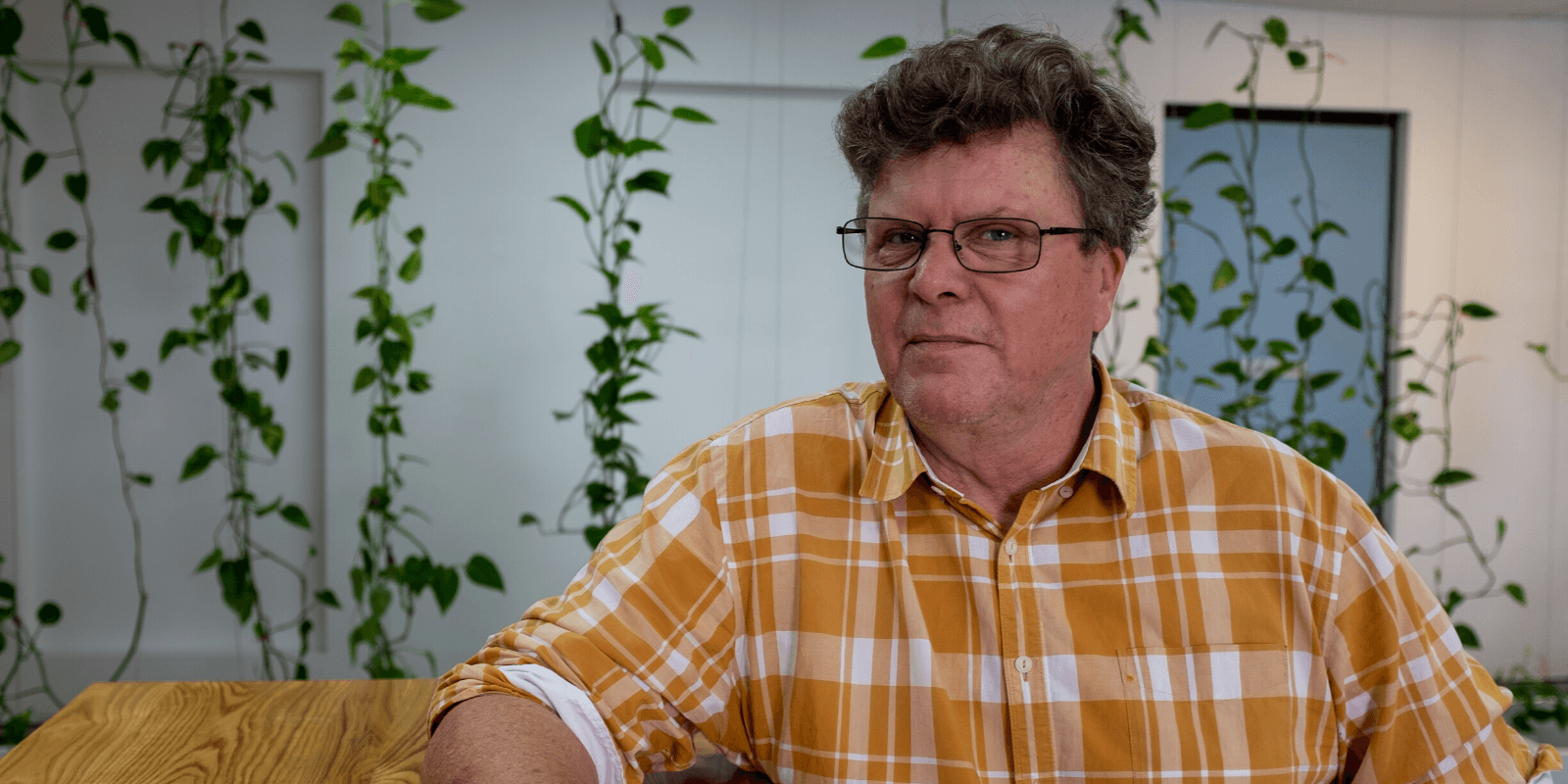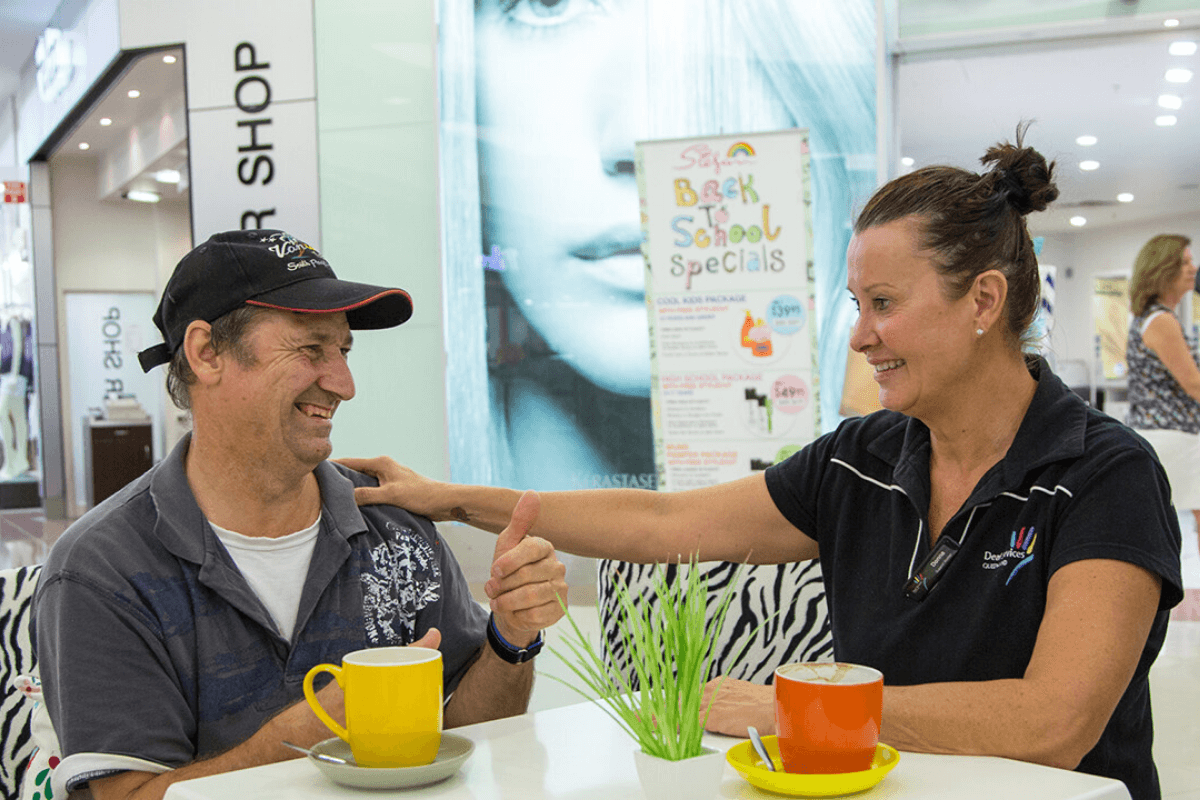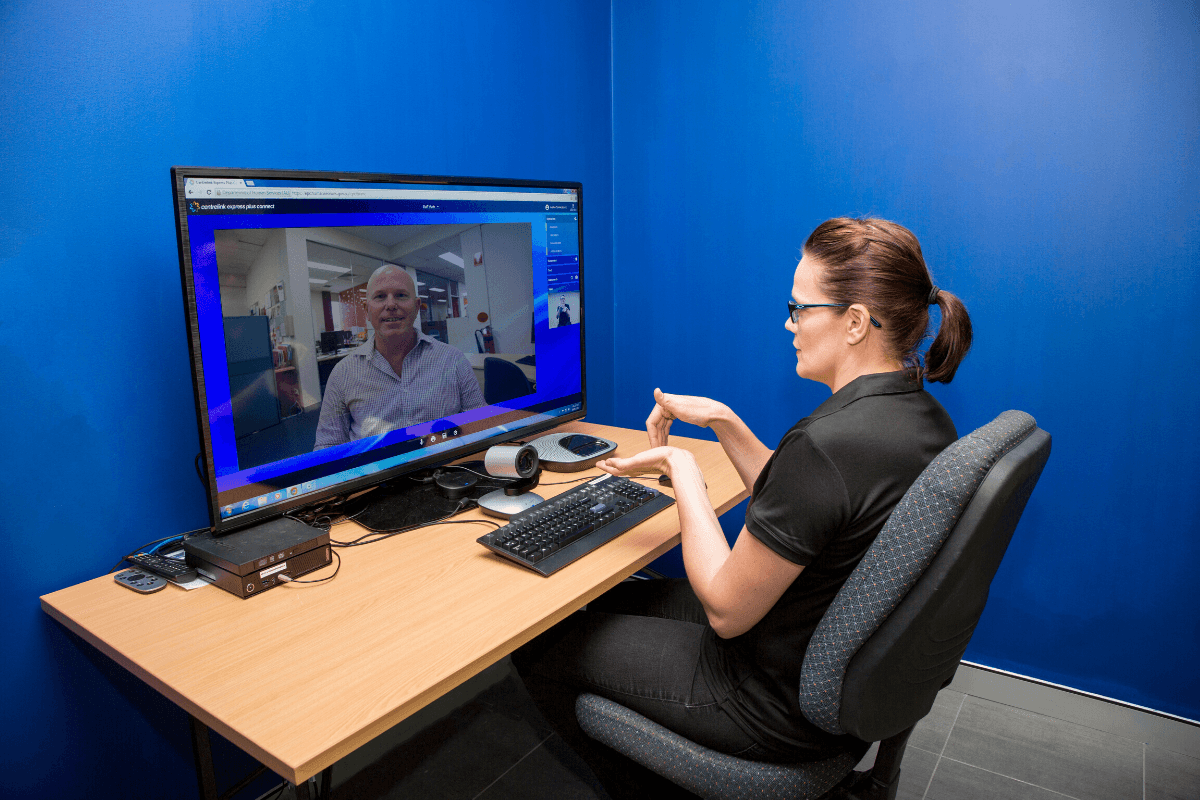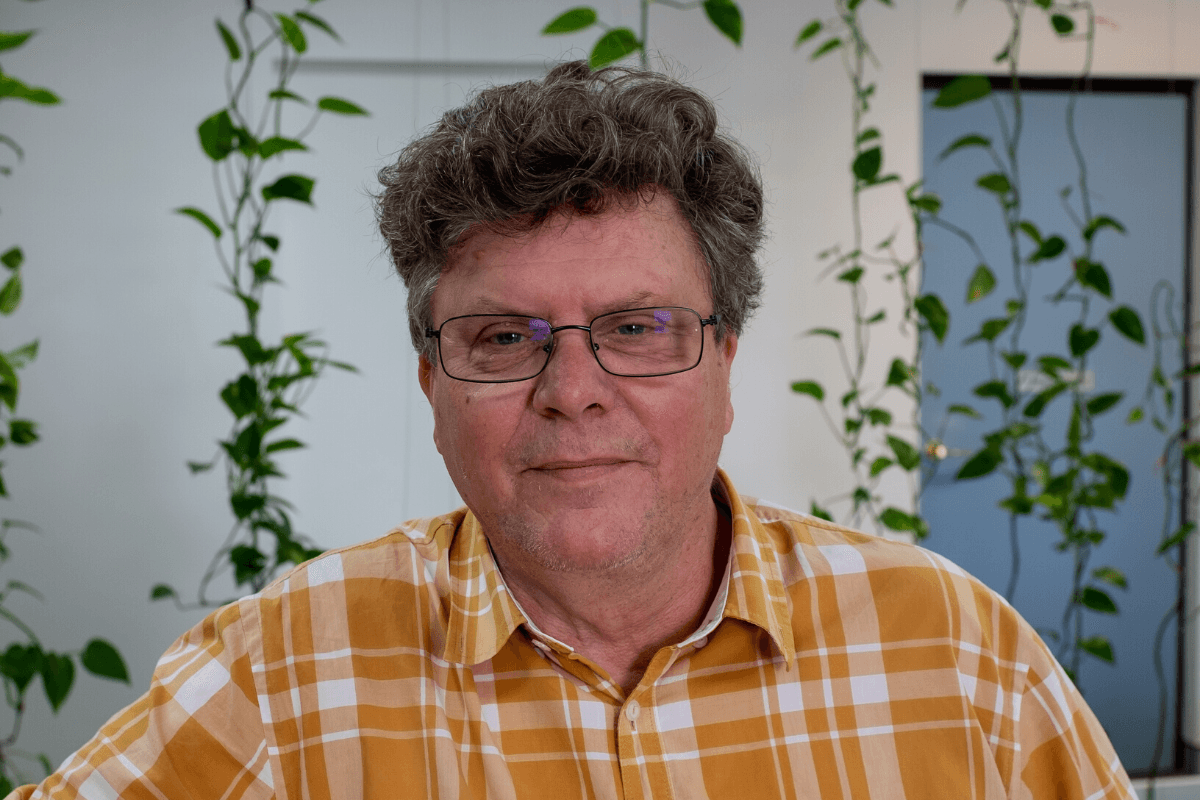Meet Jim

We caught up with Deaf Services IT Manager Jim Gordon to talk about his fascinating journey with the organisation, his achievements, and what it really means to support the Deaf Community.
Jim’s Story
- Jim started at Deaf Services in 1990
- He had no experience of Deaf community or culture, which presented some challenges!
- Jim worked to break down barriers by matching Deaf job-seekers with employers
- He began studying IT part time
- In 2005, Jim was offered the role of IT Manager
- Jim is proud of the technological advances at Deaf Services empowering Deaf Australians
- He gets most satisfaction from working with the Deaf community
Jim Gordon describes himself as a NERD, but not perhaps in the way you would associate with an IT Manager….
Before starting work at Deaf Services, Jim was indeed a NERD (Not Even Related to Deaf): he had no connections to the Deaf community.
In the late 1980s, Jim graduated university with a degree in Psychology and Political Science, and was working as an office manager for a manufacturing company.
“The work was okay,” he remembers, “but I was ready for a change.”
That change came in the form of an opportunity from Jim’s brother, who knew the then CEO of Deaf Services, and mentioned that the organization was looking for support workers for a brand new program called Lifestyle Support Services (LSS). Jim got the job, and began working for Deaf Services in 1990.
LSS was set up thanks to new federal funding for programs and services increasing independence, employment opportunities and community integration for people with disabilities. The LSS program endeavoured then (as it still does now) to support Deaf and hard of hearing participants to live independently in the general community.
“I started at LSS for a few years,” Jim remembers. “It was quite daunting to begin with.”
One of the major issues Jim faced in his new job was that he had never met a Deaf person before in his life, quite a stumbling block for someone who would be in daily contact with them.
Rather than being disheartened, Jim turned this disadvantage into an opportunity to learn Deaf culture and language, learning from his Deaf co-workers.

Lifestyle Support Services supports Deaf and hard of hearing participants
to live independently in the general community.
“It was steep learning curve,” says Jim, “but a number of the people I worked with then—and still work with today!—became my mentors, and I’m proud to have had the opportunity to learn Auslan.”
In 1994, Jim joined Deaf Services in-house employment service, Sign On Employment, and remained there for the next ten years.
“It was an honour to work in the employment service,” says Jim. “I felt I was doing my part to connect Deaf people with ‘mainstream’ workplaces, and providing any support they needed to work there.”
Jim took great pride in communicating to workplaces both over the phone and in person the benefits of employing Deaf people, connecting members of the Deaf community with jobs from software developers to factory workers, and environments from schools to boardrooms.
Jim admits the reaction from employers was initially mixed, but attitudes were constantly changing.
“You couldn’t afford to be disheartened if you got outright rejections,” he says. “But most people, once you got them on the phone, were willing to listen. Most people just didn’t know that much about the Deaf world. My work was just coming up with a series of solutions to any problems they had.”
Starting from a staff of just three, Sign On Employment grew quickly, and was soon receiving significant government funding to continue its good work.
It was during this period of growth that Jim began an interest in software and databases, and began studying an IT degree part time.

“Early on, we realised that videoconferencing was going to be
an increasingly important tool for Deaf people.”
In 2005, the Deaf Services IT Manager moved on, and Jim was “surprised and flattered” to be offered for the role. The rest, as they say, is history. Jim now proudly works as Deaf Services’ IT Manager, one of the few in Australia fluent in Auslan.
Jim says he is most proud of the technological achievements he has helped usher in during his time as IT Manager.
“We have great scope to do innovative things here,” Jim says, “and there’s a clear link between technology and improving the lives of the Deaf community. The highlights of my work has been delivering support to Deaf people who wouldn’t normally be able to receive it.”
Jim says he is particularly proud to have been part of the implementation of Deaf Services’ Video Relay Interpreting Service, which has delivered immeasurable benefits to the Deaf community particularly in remote and regional areas.
“Early on, we realised that videoconferencing was going to be an increasingly important tool for Deaf people.”
All the new work had to be created, of course, within the technological limitations of the day. How do you, for instance, deliver remote video interpreting over a dialup internet connection?
“In the early days,” says Jim, “we worked with the state government use their Telehealth facilities at clinics to create a public bridge to remote Deaf communities using fibre connections.”
Suddenly, interpreting was available to hospitals, and to clients as far away as Mt Isa and the Northern Territory border.

“We’re working for a great community. I don’t think you get that level of satisfaction in every job.”
Most of all, it is the culture and mission of the organization that means the most to Jim.
“The thing that keeps me coming to work and motivates me is that we’re working for a great community. There’s no doubt about it, and that’s very satisfying. I don’t think you get that level of satisfaction in every job.”
As well as this, the support within Deaf Services, Jim says, is its own form of community.
“I’ll never forget the fact that Deaf Services looked after me and my family when we went through the flood in 2011. We basically lost everything, and the other staff did a whip-around to help us get back on our feet. They were ready to come over place en masse and help us clean up, but the ‘Mud Army’ (volunteers and emergency service workers) got there first!”
“That was a particularly hard time for me, but my manager at the time, and indeed Brett, the CEO, told me to take as much time off as I needed. That’s just an example of a good workplace that practices what it preaches.”
For the future, Jim says there is always new technology to explore, and new ways to deliver support to the Deaf community.
“There are areas like virtual delivery of our walk-in Community Access sessions, or using virtual and augmented reality to assist our Education students. The possibilities are endless.”
